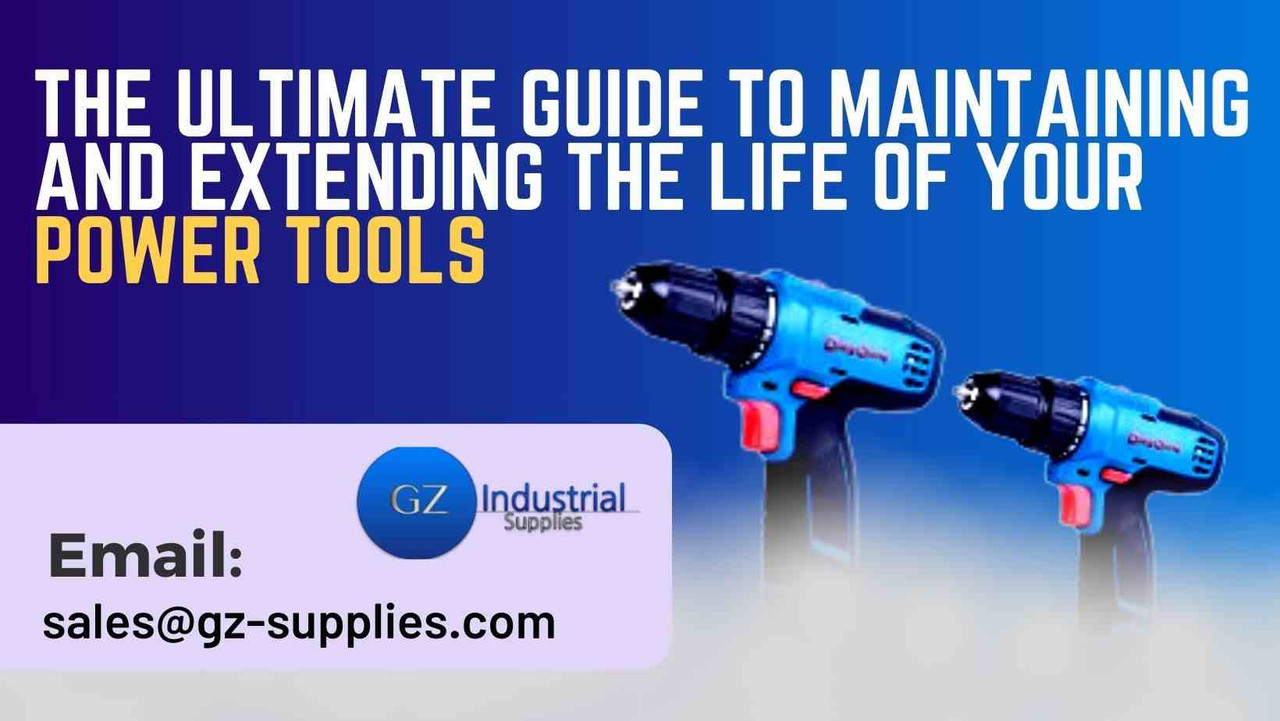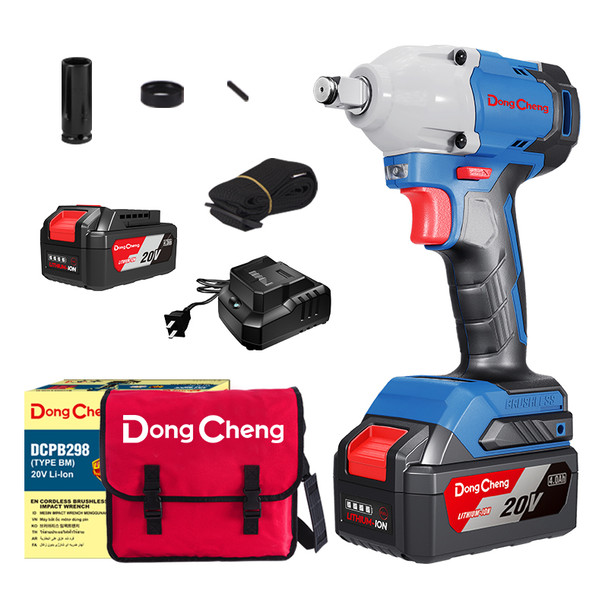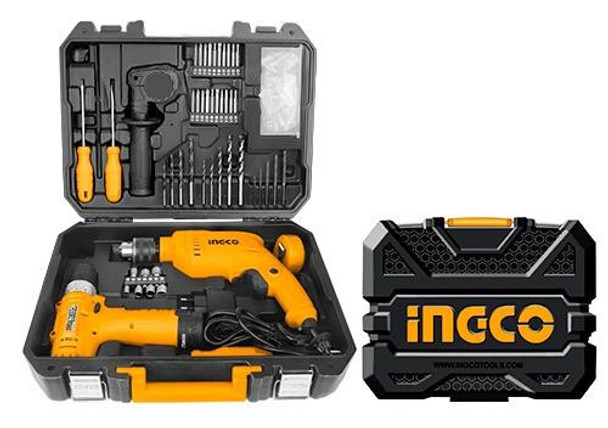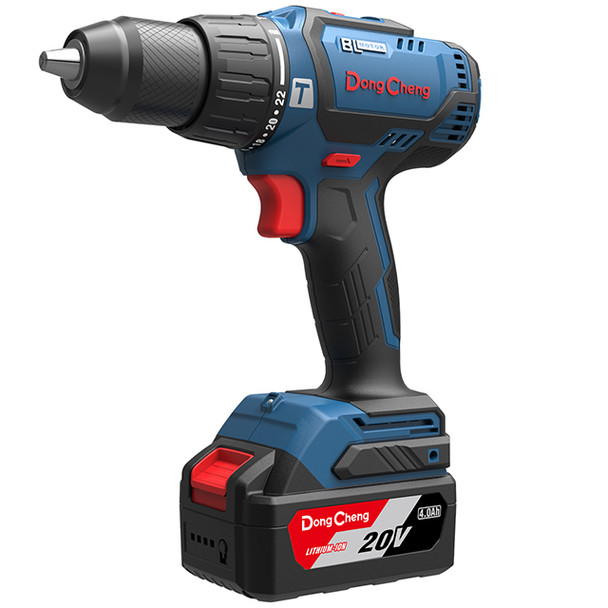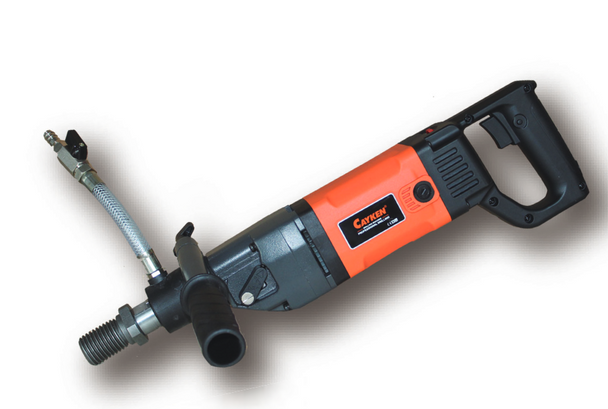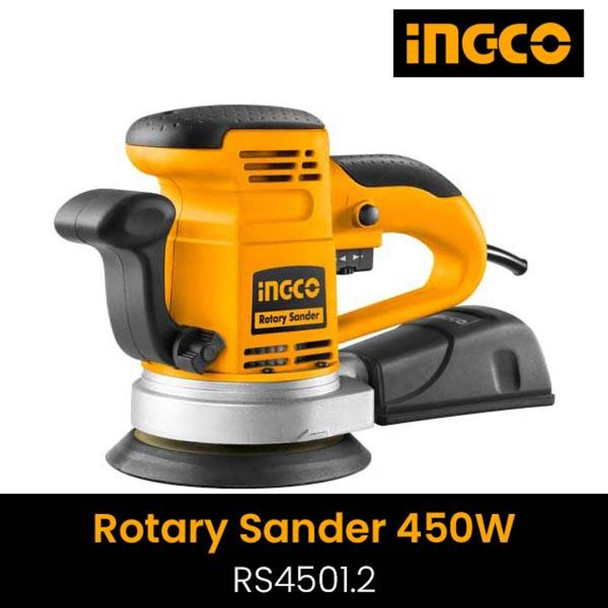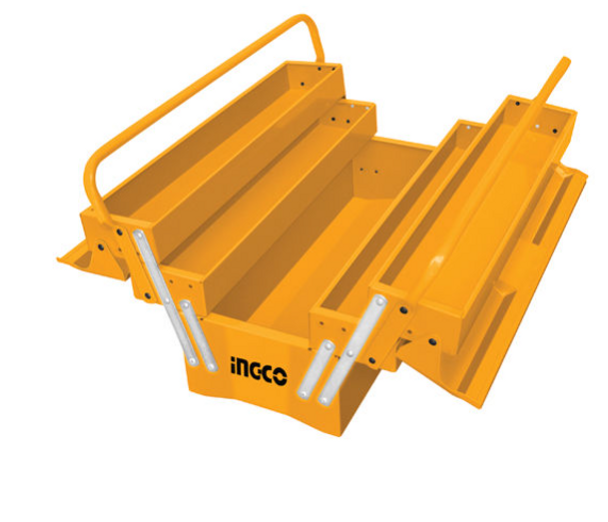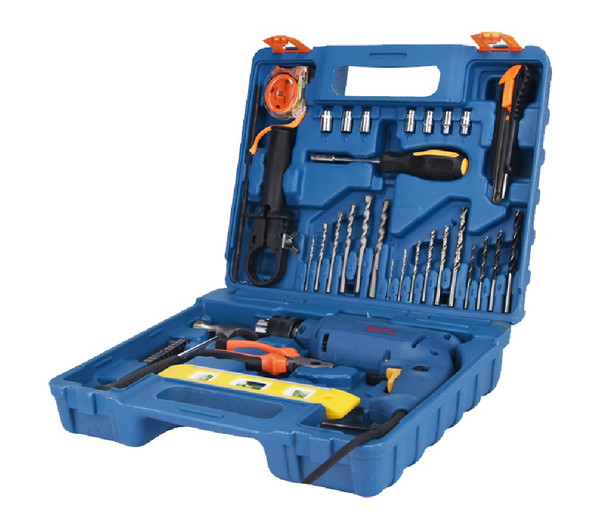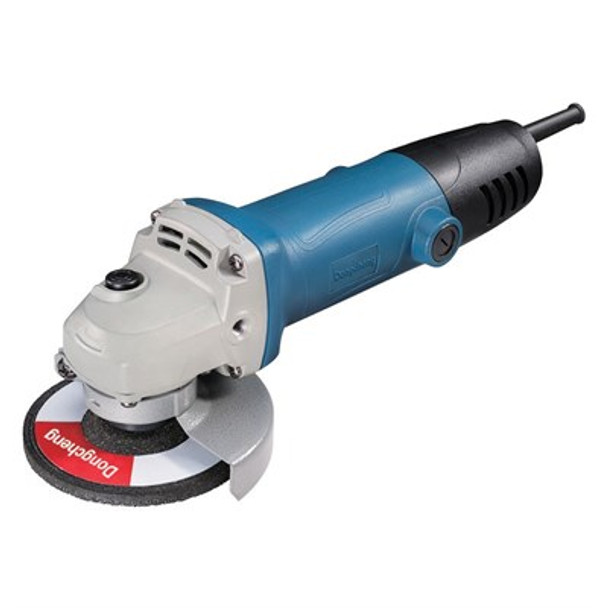The Ultimate Guide to Maintaining and Extending the Life of Your Power Tools
Key takeaway
Extending the lifespan of power tools not only safeguards against costly replacements but also unlocks a myriad of benefits that contribute to enhanced productivity and efficiency. From reduced downtime and fewer interruptions in workflow to improved safety and performance, the advantages are manifold. By implementing proactive maintenance strategies and adhering to best practices, individuals can prolong the longevity of their power tools, ultimately maximizing their return on investment and enjoying continued success in their endeavors.
Buy Online... DongCheng Cordless Brushless Impact Wrench 16 mm 20V 4A DCPB298BM
Introduction
power tools are used as indispensable companions, driving efficiency, precision, and productivity in various DIY projects, construction sites, and professional workshops, However, like any finely tuned instrument, these tools require diligent care and maintenance to uphold their performance and reliability over time. The importance of maintaining power tools cannot be overstated, as neglecting their upkeep can lead to diminished functionality, frequent breakdowns, and even safety hazards. By understanding the critical role that maintenance plays in preserving the integrity of power tools, enthusiasts and professionals alike can safeguard their investments and ensure consistent high-quality results.
One highly effective way to maintain and extend the life of your power tools is by implementing a regular cleaning and lubrication regimen. Over time, dust, debris, and residue from materials can accumulate on various parts of your tools, leading to decreased performance and increased wear. By routinely cleaning your power tools with a soft brush or cloth and removing any built-up grime, you can prevent premature deterioration and ensure smooth operation. Additionally, applying the appropriate lubricant to moving parts such as gears, bearings, and joints helps reduce friction, minimizes heat buildup, and prolongs the lifespan of vital components. Incorporating this simple yet essential maintenance practice not only enhances the efficiency and reliability of your power tools but also preserves their functionality for years to come.
This comprehensive guide is your go-to resource for unlocking the secrets to preserving and extending the lifespan of your power tools. Whether you're a seasoned pro or just starting out, join us on a journey to discover the essential tips, techniques, and practices that will empower you to keep your tools in top-notch condition, maximize their potential, and achieve outstanding results project after project.
Understanding Power Tool Components
Power tools consist of three main parts: the power source, the motor, and the tool attachment. The power source provides the energy to run the motor, which converts it into mechanical motion. The tool attachment is the part that performs the actual work, such as a drill bit, a saw blade, or a nail gun.
Some of the key components and functions of power tools are:
- Switch: The switch controls the on/off operation of the power tool. It can also regulate the speed and direction of the motor.
- Trigger: This activates the power tool when pressed. It can also vary the power output depending on how hard it is pressed.
- Handle: The handle is the part that the user holds to operate the power tool. It can have ergonomic features such as grips, cushions, and anti-vibration systems to improve comfort and safety.
- Cord: The wire that connects the power tool to an electrical outlet. It can have features such as insulation, strain relief, and cord guards to prevent damage and shock hazards.
- Battery: The battery is the power source for cordless power tools. It can have different chemistries, voltages, and capacities to suit different applications and performance levels.
- Charger: The charger replenishes the battery’s energy. It can have features such as indicators, timers, and protection circuits to ensure optimal charging and battery life.
- Motor: This is the heart of the power tool. It can be either brushed or brushless, depending on the type of commutation. Brushless motors are more efficient, powerful, and durable than brushed motors.
- Gearbox: The gearbox transfers the motor’s rotation to the tool attachment. It can have different gear ratios, materials, and lubrication systems to optimize the torque and speed of the power tool.
- Chuck: The chuck is the part that holds the tool attachment, such as a drill bit or a screwdriver bit. It can have different types, such as keyed, keyless, or SDS. The chuck can have features such as self-tightening, quick-release, and anti-lock to improve convenience and security.
- Tool Attachment: The tool attachment is the part that performs the actual work, such as drilling, cutting, sanding, and fastening. It can have different shapes, sizes, and materials to suit different applications and materials. The tool attachment can have features such as coatings, teeth, and tips to improve performance and durability.
Buy Online... 107PCS Tools Set HKTHP11071 Ingco
Common Types of Power Tools
Drills and Drivers:
- Versatile tools used for creating holes or driving screws into various materials.
- Understanding the differences between drill types and associated accessories.
Saws (Circular, Jigsaw, Reciprocating):
- Each saw serves a specific cutting purpose; understanding their differences ensures proper use.
- Blade selection and maintenance tips for optimal cutting performance.
Sanders (Orbital, Belt, Random Orbit):
- Tools designed for smoothing surfaces; each type suits different applications.
- Proper sandpaper selection and techniques for achieving desired finishes.
Grinders and Polishers:
- Used for shaping, grinding, or polishing various materials.
- Safety precautions and maintenance practices to prolong the tool's life.
Nailers:
- Used to drive nails into various materials using compressed air, gas, or electricity.
- Nailers can have different types, such as framing, finishing, or roofing, to suit different sizes and types of nails and materials.
Buy Online.... DongCheng Cordless Brushless Driver/Hammer Drill 13mm 20V/4Ah DCJZ05-13EM
Regular Maintenance Practices for Power tools
Power tools require regular maintenance to ensure their optimal performance, safety, and durability. By following some simple steps, you can extend the life of your power tools and prevent costly repairs or replacements.
1. Cleaning and Lubrication
Cleaning and lubricating your power tools are essential to keep them free from dust, dirt, and oil that can clog the vents, damage the parts, or cause overheating.
Cleaning:
- Regularly remove dust, debris, and accumulated material from the tool's exterior.
- Use a brush, compressed air, or a vacuum to prevent build-up that can affect performance.
Lubrication:
- Apply the recommended lubricants to moving parts such as gears and bearings.
- Proper lubrication reduces friction, enhancing the tool's efficiency and preventing premature wear.
2. Inspection for Wear and Damage
Inspecting your power tools for any signs of wear or damage is important to detect and fix any problems before they worsen or cause accidents.
Check External Components:
- Inspect cords, plugs, and switches for any signs of wear, damage or broken components.
- Addressing these issues promptly ensures electrical safety during operation.
Examine Moving Parts:
- Regularly check blades, gears, and other moving components for wear.
- Replace worn-out parts promptly to prevent damage to the tool or compromised performance.
If you notice any abnormal sounds, sparks, or smoke, stop using the tool immediately and seek professional help.
Buy Online... Diamond Core Drilling Machine SCY-18/2EBM Cayken
3. Tightening and Adjusting Parts
Tightening and adjusting the parts of your power tools is necessary to maintain their alignment, stability, and accuracy.
Tightening:
- Check and tighten loose bolts, screws, fasteners, and the tool attachment.
- Using appropriate tools, such as wrenches, screwdrivers, or pliers to tighten your power tools, ensures the stability of the power tool.
Adjustments:
- Calibrate your power tool settings periodically, following the manufacturer's recommendations.
- Proper adjustments optimize the tool's performance and prevent excessive wear on components.
4. Battery Care (for Cordless Tools)
Battery care is crucial for cordless power tools, as the battery is the main source of power and performance.
Charging Practices:
- Ensure you charge your battery fully before using it.
- Avoid overcharging, as it can lead to decreased battery life over time.
Storage:
- Store batteries in a cool, dry place, away from direct sunlight or heat sources when not in use.
- Avoid extreme temperatures, as they can impact battery performance and remove it from the charger and the tool when not in use
Periodic Calibration:
- Some cordless tools benefit from occasional battery calibration to maintain accurate power levels.
- Check the user manual for specific instructions on calibrating your tool's battery.
To ensure your personal safety and that of your power tools, replace your battery when it shows signs of deterioration, such as low power output, short run time, or swelling.
5. Sharpening Blades and Bits
Sharpening the blades and bits of your power tools is important to maintain their cutting and drilling efficiency and quality.
Regular Inspection:
- Periodically inspect the sharpness of blades, bits and sharpen them regularly.
- Dull tools not only decrease efficiency but also pose safety risks. Replace your blades and bits when they become dull, chipped, or cracked.
Proper Sharpening Techniques:
- Follow manufacturer recommendations, on the appropriate sharpening tools, such as files, stones, or grinders
- Use appropriate techniques to maintain optimal cutting performance.
Buy Online... Rotary Sander INGCO RS4501.2
Power tools Storage and Handling Tips
Proper Storage Conditions
The first step to storing and handling your power tools is to create a proper storage space. Ideally, you should store your power tools in a clean, dry, and temperature-controlled environment, such as a workshop, a garage, or a shed. This will protect your tools from dust, dirt, moisture, heat, cold, and other elements that can cause corrosion, rust, or malfunction. Avoid storing your power tools on the floor, as this can expose them to water, dirt, or impact. Instead, use shelves, racks, cabinets, or drawers to store your tools off the ground.
Protection from Moisture and Corrosion
Moisture and corrosion are the enemies of power tools, as they can damage the metal parts, the electrical components, and the batteries. To protect your power tools from moisture and corrosion, you should follow these tips:
- Store your power tools in a well-ventilated area, and use a dehumidifier or a fan if necessary to reduce humidity.
- Wipe your power tools with a dry cloth after every use, and apply a thin layer of oil or wax to the metal parts to prevent rust.
- Store your corded power tools with the cords loosely wrapped, and avoid storing them by the cord, as this can cause damage or shock hazards.
- Store your cordless power tools with the batteries removed, and store the batteries in a cool and dry place, preferably at 50% charge for extended periods.
- Use silica gel packets, charcoal briquettes, or rice to absorb moisture in your tool cases or boxes.
Organization and Tool Management
Organizing and managing your power tools is essential to keep them accessible, safe, and efficient.
Here are some tips for organizing and managing your power tools:
- Use labels, stickers, or color codes to identify your power tools, their chargers, and their batteries, and to indicate their status, such as charged, discharged, or broken.
- Pegboards, wall hooks, or magnetic strips can be used to hang your power tools on the wall, while you use baskets, bins, or trays to store your accessories, such as drill bits, saw blades, or sandpaper.
- You can also use tool bags, cases, or boxes to store your power tools individually or in sets, and use foam inserts, dividers, or compartments to keep them secure and organized.
- A proper tool inventory system, such as a spreadsheet, a checklist, or an app, can help keep track of your power tools, their locations, their conditions, and their maintenance schedules.
Buy Online... Ingco Empty Tool Box HTB021
Transportation Considerations
Transporting your power tools from one place to another can pose some challenges and risks, such as damage, theft, or injury. To ensure safe and easy transportation of your power tools, you should follow these tips:
Secure Packaging:
- When transporting tools, use sturdy cases or containers to prevent damage.
- Ensure that power cords and accessories are securely packed to avoid tangling or breakage.
Padding and Cushioning:
- Add padding or cushioning inside transport containers to absorb shocks and vibrations.
- Protect delicate components, such as blades or electronic parts, from impact during transportation.
Secure Fastening:
- Securely fasten power tools in a vehicle to prevent movement during transportation.
- Use straps or other securing mechanisms to keep tools in place and avoid potential damage.
Consideration for Corded Tools:
- Safely secure and protect power cords during transportation to prevent wear or damage.
- Coil cords neatly to avoid tangling, and use cable ties for added organization.
Tips for Extending Power Tool Lifespan
1. Proper Tool Selection for the Task
One of the most important tips for extending the lifespan of your power tools is to choose the right tool for the right task. Using a tool that is not suitable or intended for a certain task can result in poor quality, inefficiency, or even damage to the tool or the workpiece.
For example, using a drill that is too small or too weak for a large or hard material can cause the motor to overheat or the drill bit to break. Therefore, you should always select a tool that matches the requirements and specifications of the task, such as the size, shape, material, and purpose of the workpiece.
2. Using Tools within Recommended Limits
Another tip for extending the lifespan of your power tools is to use them within their recommended limits and capacities. Every power tool has its own ratings and features, such as voltage, amperage, wattage, speed, torque, and load, which indicate its performance and capability. Exceeding these limits or capacities can cause the tool to malfunction, overheat, or wear out prematurely. Therefore, you should always follow the manufacturer’s instructions and guidelines for using your power tools, and avoid pushing them beyond their optimal range.
Buy Online... DongCheng Electrical Impact Drill (Tool Kit) DZJ 04-13
3. Avoiding Overloading and Overheating
Overloading and overheating are two common causes of power tool failure and damage. Overloading occurs when the tool is subjected to excessive force, pressure, or resistance, which can strain the motor, the gearbox, or the tool attachment. Overheating occurs when the tool is used for too long or too fast, which can generate excessive heat and damage the electrical components, the brushes, or the battery. To avoid overloading and overheating your power tools, you should follow these tips:
Monitor Motor Temperature:
- Regularly check the motor's temperature during prolonged use.
- Allow cooling breaks when necessary to prevent overheating and ensure the longevity of internal components.
Avoid Overloading:
- Be mindful of the workload, especially in heavy-duty applications.
- Overloading the tool can lead to increased wear on components and a shorter lifespan.
Proper Ventilation:
- Ensure adequate airflow around the tool during operation.
- Proper ventilation helps dissipate heat and prevents the accumulation of damaging heat within the tool.
4. Regular Calibration and Adjustment
Calibration and adjustment are essential maintenance tasks that ensure the accuracy and efficiency of your power tools. Here are some tips to guide you.
Periodic Calibration:
- Follow the manufacturer's recommendations for calibration and adjustment.
- Regular calibration ensures accurate performance and prevents issues that may arise from misaligned components.
Inspect and Adjust Settings:
- Regularly inspect and adjust tool settings to ensure proper functionality.
- This includes checking alignment, tension, and any other adjustable components that may affect performance.
Maintain Moving Parts:
- Lubricate and maintain moving parts according to the manufacturer's guidelines.
- Regular maintenance of bearings, gears, and other moving components ensures smooth operation and extends the tool's lifespan.
By performing regular calibration and adjustment, you can improve the precision and performance of your power tools, and prevent errors, defects, or malfunctions.
Buy Online... DongCheng Angle Grinder 710W 115mm DSM02-115
97% of our readers also like;
Safety Tips for Handling Power Tools
Top 5 Power Tools Every Industrial Worker Should Have
The 10 Most Important Power Tools in Used in Nigeria 2024
The Ultimate Guide to Tool Maintenance: Extend the Life of Your Equipment
Conclusion
Power tools are indispensable tools that can help you accomplish various tasks with ease and efficiency. However, they also require proper care and maintenance to ensure their optimal performance, safety, and durability. By following the tips and practices discussed in this article, you can extend the lifespan of your power tools and prevent damage, malfunction, or injury. Some of the key tips and practices are:
- Understanding the components and functions of your power tools
- Cleaning and lubricating your power tools regularly
- Inspecting your power tools for wear and damage
- Tightening and adjusting the parts of your power tools
- Charging and storing your batteries properly (for cordless tools)
- Sharpening your blades and bits
- Choosing the right tool for the right task
- Using your tools within their recommended limits and capacities
- Avoiding overloading and overheating your tools
- Calibrating and adjusting your tools periodically
- Storing and handling your tools properly
- Transporting your tools safely and securely
By following these tips and practices, you can not only extend the lifespan of your power tools, but also improve their quality and efficiency. You can also save time, money, and effort by avoiding costly repairs or replacements. Moreover, you can also protect yourself and others from accidents or injuries involving your power tools.
Power tools are valuable investments that deserve your consistent care and attention. By taking good care of your power tools, you can enjoy their benefits for a long time and make the most of your projects. Remember, responsible tool ownership is not only good for your tools, but also for yourself and the environment. For more information or if you have any enquiries, feel free to contact us at gz-supplies.com

